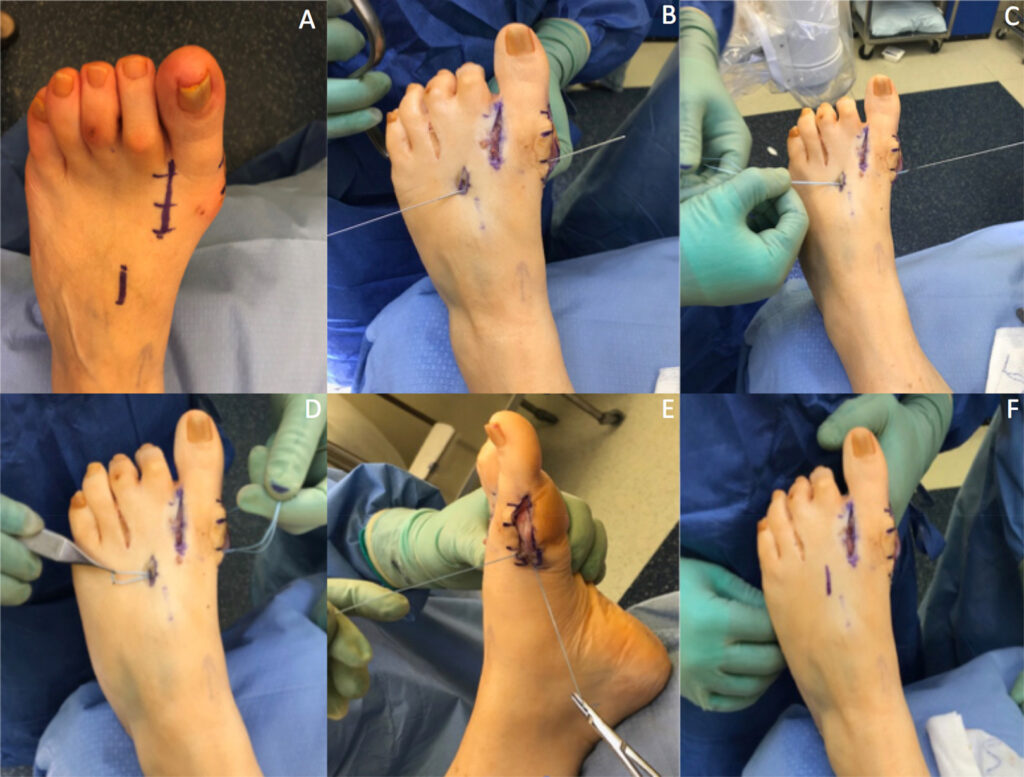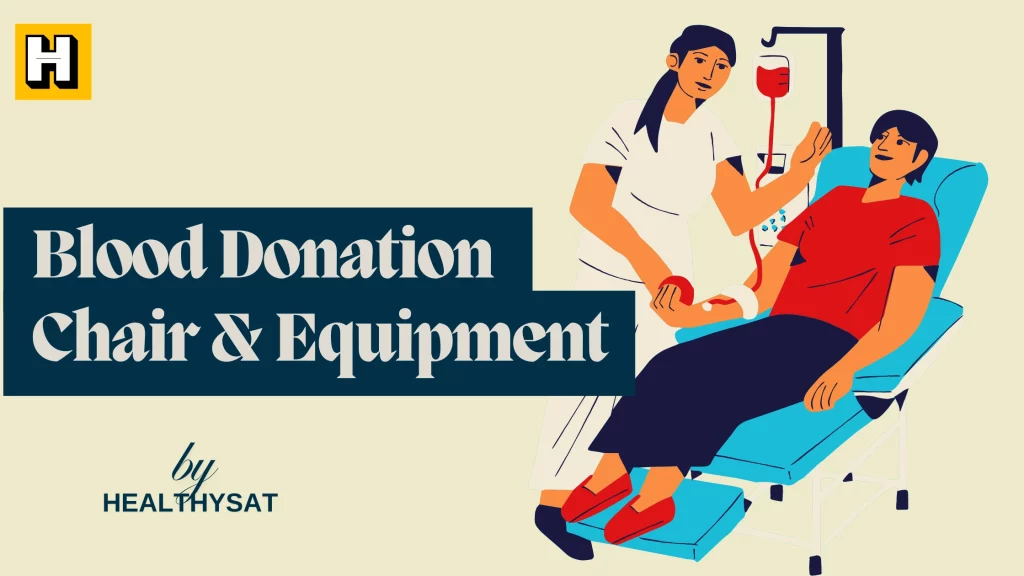Introduction:
Are you suffering from the discomfort and pain caused by bunions? If so, you’re not alone. Bunions can be a nuisance, making walking or wearing your favorite shoes difficult. However, there is a glimmer of hope for those seeking relief. In recent years, a revolutionary surgical technique called tightrope bunion surgery has emerged as a game-changer in podiatry. In this article, we’ll dive into tightrope bunion surgery’s details, benefits, the recovery process, and more. So, put your best foot forward, and let’s embark on this journey to pain-free feet!
Understanding Bunions: The Bumpy Road to Foot Problems
Bunions are a common foot condition characterized by a bony bump at the base of the big toe. They occur when the joint at the base of the big toe becomes misaligned, forcing the big toe to deviate towards the other toes. The friction and pressure from shoes can worsen the condition, leading to pain, swelling, and difficulty finding comfortable footwear.
What is Bunionectomy?
A bunionectomy is a surgical procedure performed to treat a bunion, which is a deformity of the joint at the base of the big toe. In medical terms, it is called hallux valgus. A bunion causes the big toe to deviate towards the other toes, resulting in a bony prominence on the side of the foot.
During a bunionectomy, the surgeon removes the bony prominence and realigns the affected joint and bones. The specific surgical technique used may vary depending on the severity of the bunion and the surgeon’s preference. Some common techniques include:
1. Osteotomy:
In this procedure, the surgeon cuts and realigns the bones of the big toe joint to correct the deformity.
2. Exostectomy:
This technique involves the removal of the bony prominence or bumps on the side of the foot without realigning the joint.
3. Arthrodesis:
It is a more extensive procedure where the surgeon fuses the big toe joint to provide stability and alleviate pain.
4. Resection arthroplasty:
In this procedure, the surgeon removes a portion of the bone or joint to create more space and reduce pain.
Bunionectomy is typically performed under anesthesia, and the specific type of anesthesia used may vary, ranging from local anesthesia to general anesthesia. Recovery time after a bunionectomy depends on the surgery’s extent and may involve crutches or a walking boot for some time. Physical therapy or rehabilitation exercises may be recommended to help regain strength and flexibility in the foot.
It’s important to consult with a qualified orthopedic surgeon or podiatrist to determine if a bunionectomy is necessary and to discuss the most appropriate treatment options based on your specific condition.
Causes of Bunion
While the exact cause of bunions is not fully understood, several factors can contribute to their formation. Here are some common causes:
1. Genetics:
Bunions tend to run in families, suggesting a genetic component. If your parents or close relatives have bunions, you may also have a higher risk of developing them.
2. Foot structure and mechanics:
Certain foot types and abnormalities can increase the likelihood of bunions. Conditions like flat feet, low arches, or instability of the foot joints can lead to uneven weight distribution, putting excessive pressure on the big toe joint.
3. Improper footwear:
Wearing tight, narrow, or high-heeled shoes can force the toes into an unnatural position, squeezing them together and pushing the big toe joint outward. Prolonged use of such footwear can contribute to the development of bunions.
4. Trauma or injury:
An injury to the foot or repeated trauma to the toe joint can cause inflammation and instability, leading to the development of a bunion over time.
5. Inflammatory conditions:
Certain inflammatory conditions, such as rheumatoid arthritis, can affect the joints and cause deformities, including bunions.
6. Hormonal factors:
Some hormonal imbalances or conditions, such as hormonal changes during pregnancy or menopause, may increase the risk of bunion development.
7. Occupation and activities:
Occupations or activities that involve prolonged standing, walking, or excessive pressure on the feet can contribute to the formation of bunions.
It’s important to note that while these factors can increase the likelihood of developing bunions, they may not necessarily cause them in all cases. If you suspect you have a bunion or are experiencing foot pain, it’s advisable to consult a healthcare professional for an accurate diagnosis and appropriate treatment options.
Diagnosis and Treatment of Bunion
Diagnosis:
Diagnosing a bunion involves a physical examination of the affected foot. Your doctor will examine the alignment of your toes and feet, check for any pain or tenderness, and evaluate your range of motion. They may also order X-rays to assess the extent of the deformity and rule out other possible conditions.
Treatment:
The options for a bunion vary depending on the severity of the condition and the level of pain and discomfort experienced. In mild to moderate cases, non-surgical approaches are usually recommended. These may include:
1. Wearing appropriate footwear:
Use shoes with a wide-toe box and low heels to relieve pressure on the bunion and provide enough room for the toes to move freely.
2. Padding and taping:
Your doctor may advise using protective padding or moleskin around the bunion to reduce friction and pressure. Taping the affected toe into a more normal position can also help relieve symptoms.
3. Orthotic devices:
Custom-made shoe inserts (orthotics) can help stabilize the joint, improve foot mechanics, and reduce pain.
4. Medications:
Over-the-counter nonsteroidal anti-inflammatory drugs (NSAIDs), such as ibuprofen, can help alleviate pain and reduce inflammation.
5. Ice therapy:
Applying ice packs to the bunion for about 15 minutes several times daily can help reduce pain and inflammation.
6. Physical therapy:
Specific exercises and stretches can help improve the strength and flexibility of the affected foot and toe.
If conservative measures fail to provide sufficient relief or the bunion progresses and causes severe pain or limits your daily activities, your doctor may recommend surgery. Surgery aims to realign the affected joint and correct any underlying structural abnormalities. Several surgical procedures are available, and the specific technique will depend on the individual case.
It’s important to consult with a qualified healthcare professional, such as a podiatrist or orthopedic surgeon, to determine the most appropriate course of treatment for your specific situation. They can provide a thorough evaluation and personalized recommendations to address your bunion.
- How Much Is IVF in Nigeria: Understanding the Cost of IVF Treatment
- Neurovit Forte: A Comprehensive Guide for Nerve Pain Relief
- Benefits of Scent Leaf: Unleashing the Health Wonders of this Powerful Herb
- Health Benefits of Bitter Leaf: The Ultimate Guide to this Powerful Herb
- Microblading Healing Process: A Comprehensive Guide
Traditional Bunion Surgery: The Old Methods on Shaky Ground
Historically, bunion surgeries involved extensive bone removal and realignment procedures. While effective, these traditional methods often require large incisions, resulting in longer recovery times, scarring, and potential complications. Patients would have to bear the burden of prolonged downtime, making it challenging to promptly return to their daily activities.
Enter Tightrope Bunion Surgery: Balancing Precision and Innovation
Tightrope bunion surgery, also known as the mini tightrope procedure or the tightrope fixation technique, has gained popularity for its minimally invasive approach to bunion correction. Unlike traditional methods, this innovative technique aims to realign the big toe without extensive bone removal or large incisions.
How Does Tightrope Bunion Surgery Work?
In tightrope bunion surgery, the podiatric surgeon makes a small incision near the bunion. Through this incision, specialized tools are used to create a small hole in the first metatarsal bone, which is the bone behind the big toe. A strong, durable suture or “tightrope” is then inserted through this hole, spanning the first metatarsal and the base of the big toe. The suture acts as a guide to correct the misalignment and stabilize the joint.
Benefits of Tightrope Bunion Surgery: Walking the Extra Mile
Tightrope bunion surgery offers several advantages over traditional procedures, making it an appealing choice for patients and surgeons. Some key benefits include:
1. Minimally Invasive:
The small incision and absence of extensive bone removal result in less trauma to the foot, leading to faster healing and reduced scarring.
2. Faster Recovery:
Compared to traditional surgery, tightrope bunion surgery typically allows for a quicker return to regular activities, enabling patients to get back on their feet sooner.
3. Greater Stability:
The tightrope technique provides excellent stability to the realigned joint, reducing the risk of recurrence and promoting long-term success.
4. Reduced Risk of Complications:
With fewer incisions and less bone manipulation, the risk of infection, nerve damage, and other complications is significantly reduced.
What to Expect During the Recovery Period: Navigating the Healing Process
While tightrope bunion surgery offers faster recovery compared to traditional methods, it’s essential to understand the healing journey. Here’s a brief overview of what to expect:
1. Immediate Postoperative Period:
You’ll be required to wear a protective boot or shoe for a specified period to support the foot during the initial healing phase.
2. Limited Weight-Bearing:
Depending on the surgeon’s instructions, you may need to limit weight-bearing on the operated foot for a certain period to allow the bone to heal properly.
3. Physical Therapy:
Sometimes, your surgeon may recommend physical therapy exercises to improve strength, flexibility, and overall foot function.
4. Follow-Up Appointments:
Regular check-ups with your podiatrist will be scheduled to monitor your progress and ensure optimal healing.
Conclusion
Tightrope bunion surgery is a remarkable advancement in the treatment of bunions, offering patients a minimally invasive and effective solution to their foot problems. By avoiding extensive bone removal and large incisions, this procedure presents a promising path to faster recovery, improved stability, and a return to pain-free mobility. If you’re considering bunion surgery, consult a qualified podiatric surgeon to explore whether tightrope bunion surgery is the right option. Take that step towards comfortable feet and bid farewell to the bumpy road of bunions!
Frequently Asked Questions (FAQs):
Q1: How long does recovery typically last after tightrope bunion surgery?
A1: The recovery period can vary depending on individual factors, but most patients can expect to return to normal activities within a few weeks to a few months.
Q2: Will I be able to wear my regular shoes after tightrope bunion surgery?
A2: As your foot heals, you may gradually transition to wearing your regular shoes. Your surgeon will guide you when it is safe to do so.
Q3: Can I drive after tightrope bunion surgery?
A3: Driving may be restricted during the initial phase of recovery when weight-bearing on the operated foot is limited. Following your surgeon’s advice regarding driving and returning to other activities is crucial.
Q4: Are there any non-surgical alternatives to treat bunions?
A4: In some cases, non-surgical treatments such as orthotic devices, changes in footwear, or physical therapy may help alleviate bunion symptoms. However, these methods cannot correct the underlying misalignment and deformity.
Q5: How long do the results of tightrope bunion surgery last?
A5: While tightrope bunion surgery provides long-term relief for most patients, individual results may vary. It’s essential to maintain good foot care practices and follow your surgeon’s recommendations to prolong the benefits of the surgery.
Q6: How long does tightrope bunion surgery take?
A1: The procedure typically takes around one hour, but the duration may vary depending on the case’s complexity.
Q7: Will I experience any pain after the surgery?
A7: While discomfort is common in the initial stages of recovery, your surgeon will provide pain management strategies to help alleviate any postoperative pain.
Q8: Can tightrope bunion surgery be performed on severe bunions?
A8: The suitability of tightrope bunion surgery depends on the individual case. Severe bunions may require a more extensive surgical approach, and your podiatrist will assess the best course of action.
Q9: Are there any risks associated with tightrope bunion surgery?
A9: As with any surgical procedure, there are inherent risks involved. However, tightrope bunion surgery is generally considered safe, and your surgeon will take necessary precautions to minimize complications.
Q10: Is tightrope bunion surgery covered by insurance?
A10: Insurance coverage varies, so it’s important to consult with your insurance provider beforehand to understand the extent of coverage for the procedure.







